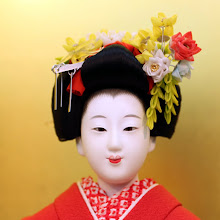It was during the Heian period (794-1192) that the kimono became very stylized but was still featured with a half-apron over it. Then during the Muromachi age (1392-1573) that the kimono went through another transformation, the Kosode which was considered to be underwear began to be worn without the hakama over it.
Without the hakama (trousers, divided skirt)the kimono needed a way to remain closed, and so a belt or Obi was added. The final major change to the kimono came during the Edo period (1603-1867) when the sleeves grew in length, especially among unmarried women. The Obi also became much wider. After this period the design and shape of both male and female kimonos remained relatively the same.
The process of making the kimono is considered by many to be an artistic process with only the finest silks being used. Traditional kimono makers will sew the entire kimono by hand but even machine made kimonos have a significant amount of hand stitching.
There are both formal and informal types of kimonos. A formal kimono will have a free style design dyed over the surface of the kimono. An informal kimono will have a repeat pattern dyed or will be woven. In some cases the pattern on the kimono will also determine the season in which it is to be worn. For example a pattern that combines butterflies and cherry blossoms would be worn in Spring while watery themed designs are worn in summer.
A proper kimono is not cheap with a woman’s kimono costing more than $10,000 but a full kimono outfit could easily run more than $20,000. But this is not a price that the majority of Japanese will pay, rather there are kimono designs that are far less extravagant and much less expensive. There is even a booming market for second hand kimonos and machine crafted kimonos. Some people will even use patterns and create their own kimonos.



No comments:
Post a Comment